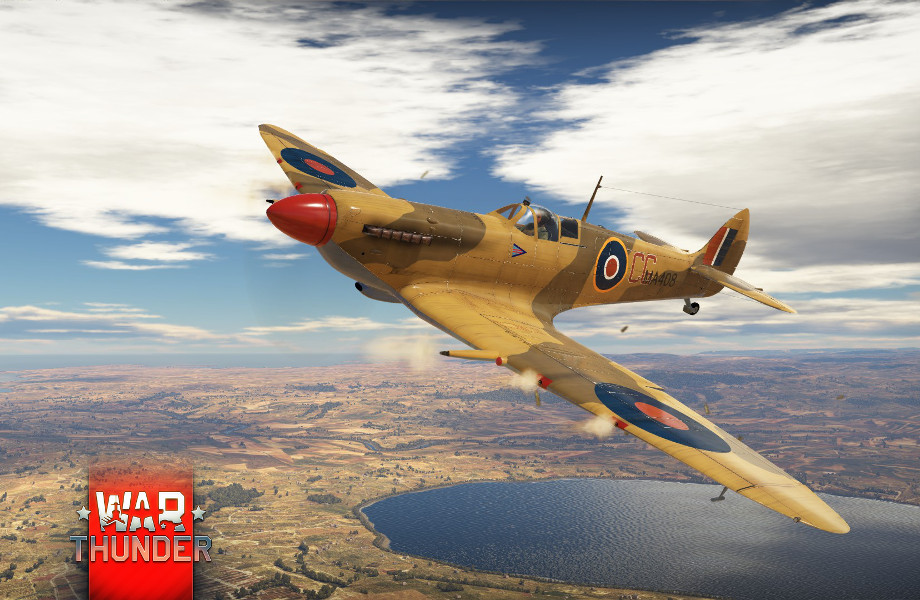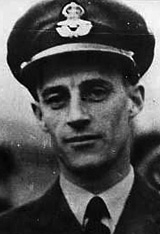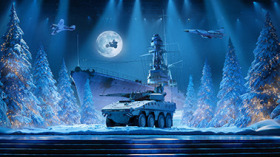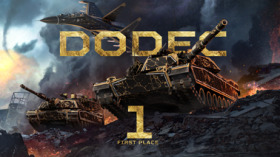
- For PC
- For MAC
- For Linux
- OS: Windows 10 (64 bit)
- Processor: Dual-Core 2.2 GHz
- Memory: 4GB
- Video Card: DirectX 11 level video card: AMD Radeon 77XX / NVIDIA GeForce GTX 660. The minimum supported resolution for the game is 720p.
- Network: Broadband Internet connection
- Hard Drive: 22.1 GB (Minimal client)
- OS: Windows 10/11 (64 bit)
- Processor: Intel Core i5 or Ryzen 5 3600 and better
- Memory: 16 GB and more
- Video Card: DirectX 11 level video card or higher and drivers: Nvidia GeForce 1060 and higher, Radeon RX 570 and higher
- Network: Broadband Internet connection
- Hard Drive: 62.2 GB (Full client)
- OS: Mac OS Big Sur 11.0 or newer
- Processor: Core i5, minimum 2.2GHz (Intel Xeon is not supported)
- Memory: 6 GB
- Video Card: Intel Iris Pro 5200 (Mac), or analog from AMD/Nvidia for Mac. Minimum supported resolution for the game is 720p with Metal support.
- Network: Broadband Internet connection
- Hard Drive: 22.1 GB (Minimal client)
- OS: Mac OS Big Sur 11.0 or newer
- Processor: Core i7 (Intel Xeon is not supported)
- Memory: 8 GB
- Video Card: Radeon Vega II or higher with Metal support.
- Network: Broadband Internet connection
- Hard Drive: 62.2 GB (Full client)
- OS: Most modern 64bit Linux distributions
- Processor: Dual-Core 2.4 GHz
- Memory: 4 GB
- Video Card: NVIDIA 660 with latest proprietary drivers (not older than 6 months) / similar AMD with latest proprietary drivers (not older than 6 months; the minimum supported resolution for the game is 720p) with Vulkan support.
- Network: Broadband Internet connection
- Hard Drive: 22.1 GB (Minimal client)
- OS: Ubuntu 20.04 64bit
- Processor: Intel Core i7
- Memory: 16 GB
- Video Card: NVIDIA 1060 with latest proprietary drivers (not older than 6 months) / similar AMD (Radeon RX 570) with latest proprietary drivers (not older than 6 months) with Vulkan support.
- Network: Broadband Internet connection
- Hard Drive: 62.2 GB (Full client)
Supermarine Spitfire Mk IX of Colin Gray - camouflage created by Aotea | Download here
Born on 9th November 1914, the twin brothers Colin and Ken, grew up in Wellington and Christchurch, New Zealand. At the age of 19 Colin found employment as a clerk; however, four years later both he and his brother attempted to join the Royal Air Force as pilots. Ken was accepted but Colin was rejected on medical grounds. He continued work as a clerk for another year and was rejected again by the RAF and so took up work on a farm to improve his fitness. On his third attempt his was accepted by the RAF and began his short service commission in January 1939.
Gray carried out his Basic Flying Training at the de Havilland Flying School at Hatfield before progressing on to No.11 Flying Training School at RAF Shawbury, Shropshire. Earning his pilot’s brevet and graduating as a Pilot Officer, Gray showed enough aptitude to be streamed onto single seat fighters and was posted to No.54 Squadron in November 1939, operating Supermarine Spitfire Mk.Is from RAF Hornchurch, Essex. Whilst Colin Gray saw out 1939 flying his first operational patrols over the English Channel, his twin brother Ken was now a pilot in RAF Bomber Command. and iIn December 1939 he was awarded the Distinguished Flying Cross.
The patrols of the ‘Phoney War’ continued through winter and into the spring of 1940. Tragically in May, Gray heard of the death of his twin brother in a flying accident over Scotland; an occurrence which deeply affected him. On May 24th Gray finally had his first encounter with German aircraft over the Calais-Dunkirk area. The next day, whilst escorting a formation of Fairey Swordfish, Gray shared in the destruction of a Bf 109 with Sergeant John Norwell but returned his fighter to Hornchurch with heavy damage after being caught off guard by a Bf 109 whilst watching his own victim falling towards the sea. The damage to his Spitfire included the near loss of one aileron, losing hydraulic and air pressure and having no Airspeed Indicator readout. As a result, his landing was particularly fast; a fact that was commented on dryly by the station commander at Hornchurch who watched his approach to land and assumed it was due to poor piloting skill.
On July 13th he shot down another Bf 109 near Calais. Gray fought alongside fellow No.54 Squadron New Zealander Al Deere through the Battle of Britain, operating from Hornchurch and Manston. In near daily contact with the enemy, Gray had claimed 15 ½ German aircraft destroyed by the time his squadron was removed from 11 Group in September 1940. No.54 Squadron was relocated to RAF Catterick in Yorkshire where the fighting was less intense, giving the exhausted survivors of the summer’s fighting a chance to regroup. For his contribution during the Battle of Britain, Gray was awarded the Distinguished Flying Cross.
Promoted to Flying Officer in October 1940, Gray served briefly with No.43 Squadron flying Hawker Hurricanes before returning to No.54, and then being posted to No.1 Squadron. With the focus of the air war in northwest Europe now shifting, Gray found himself involved in offensive fighter sweeps, ‘stepping out’ over northern France. In August 1941 he was promoted to Flight Lieutenant and one month later was awarded a bar to his DFC before taking command of the Spitfire-equipped No.616 Squadron. In February 1942 Gray was given a staff appointment at HQ No.9 Group for a seven month break from front line flying.
Returning to front line operations in September 1942, Gray was promoted to Acting Squadron Leader and flew Spitfire Mk.Vs with No.64 Squadron before taking command of No.81 Squadron in Algeria in January 1943, also equipped with Spitfires. Over the next few months he shot down a further eight enemy aircraft and in May was awarded the Distinguished Service Order. The next month he was made Acting Wing Commander and took over No.322 Wing in Malta. Sorties in support of Operation Husky, the allied invasion of Sicily, brought saw another five enemy aircraft destroyed, bringing Gray’s final total 27 victories, one shared and up to 22 probables or damaged. His substantive promotion to Squadron Leader was confirmed in September and a second bar to his DFC was awarded in November after his return to England.
After a brief period employed in instructional duties, Gray took command of the Detling and then the Lympne Wings, flying Spitfires in support of operations over the continent. Gray survived the war as New Zealand’s top scoring fighter ace. He was seconded to the Royal New Zealand Air Force in July 1945 but returned to the RAF in 1946, retaining the rank of Squadron Leader following the cessation of hostilities. His post war career saw a succession of staff appointments, including as an air liaison officer to the United States Air Force, a HQ appointment in Singapore and commanding RAF Church Fenton after he trained on the Gloster Meteor. Gray retired from the Royal Air Force in 1961 with the rank of Group Captain.
Gray returned to New Zealand with his family after retiring from the RAF. He later recorded his wartime experiences in his autobiographical account “Spitfire Patrol”. He passed away in 1995, at the age of 80 – within only a month of the passing of fellow New Zealand ace and lifelong friend, Al Deere. He is remembered as an assertive individual who was never afraid to voice his opinions and concerns with his superiors.
About The Author
 |
Mark Barber, War Thunder Historical Consultant Mark Barber is a pilot in the British Royal Navy's Fleet Air Arm. His first book was published by Osprey Publishing in 2008; subsequently, he has written several more titles for Osprey and has also published articles for several magazines, including the UK's top selling aviation magazine 'FlyPast'. His main areas of interest are British Naval Aviation in the First and Second World Wars and RAF Fighter Command in the Second World War. He currently works with Gaijin Entertainment as a Historical Consultant, helping to run the Historical Section of the War Thunder forums and heading up the Ace of the Month series. |
Want to read more about the famous aces of World War II? Find other Ace Profiles on our website!
The War Thunder Team









Comments (3)
What an excellent pilot! He will be missed
nice! Great work Gaijin!
when we will see some new things about squadron battles?
Submit a complaint